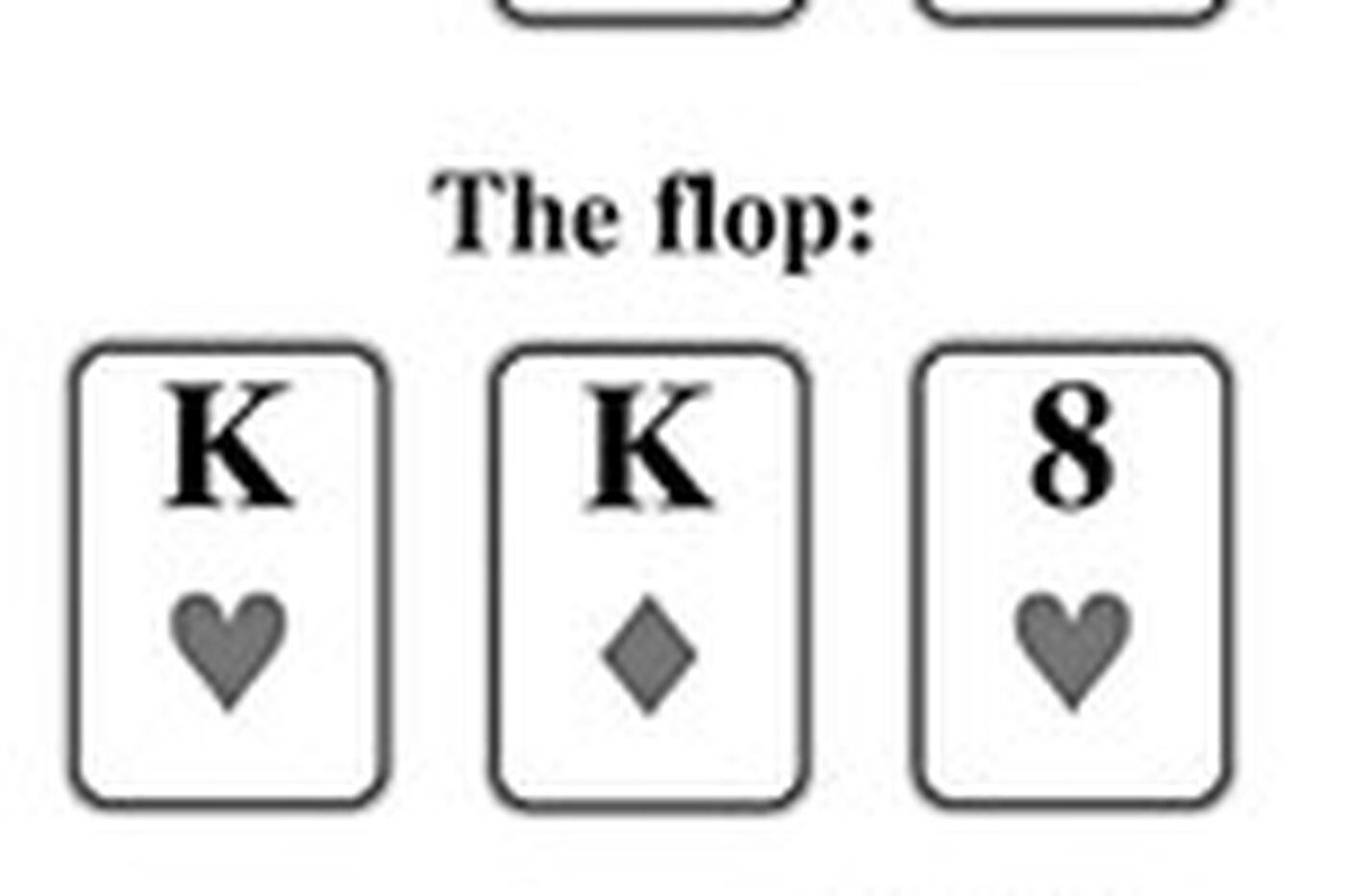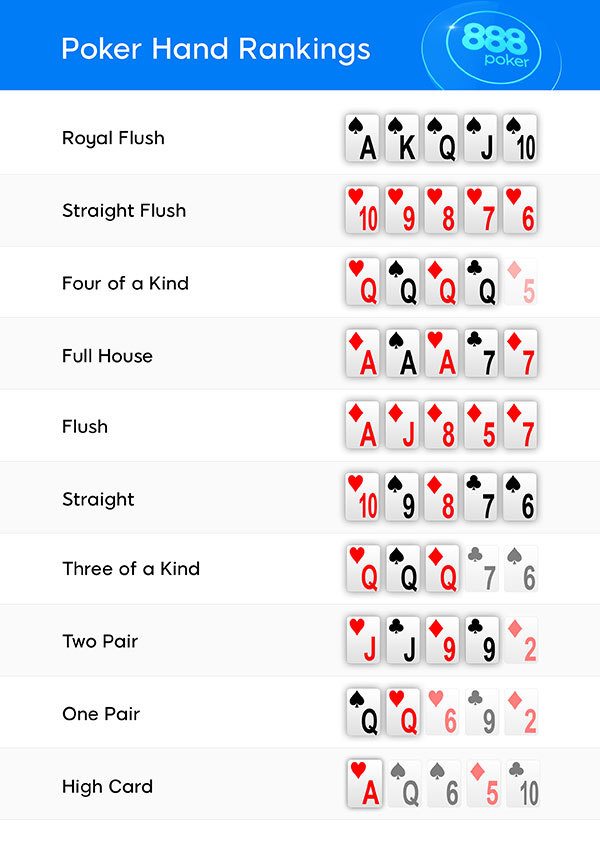Poker Hands In Order Of Importance
- In Omaha poker a hand such as will only beat 59.84% of the time. This closeness in preflop hand strength is one factor leading to players playing more hands, seeing more flops, and PLO being more.
- In Seven-Card Stud and Stud eight-or-better to decide the bring-in hand, where the player with the lowest card must start the action. In Razz to decide the bring-in hand, where the player with the highest card must start the action. In a game with a split pot as in Seven-Card Stud, where the player with the highest card receives the Odd chip.
There are often interesting or down right bizarre hands played out at poker tables around the world, both online and live. From horrific bad beats to perfectly timed bluffs, poker has it all.
Regardless of which variety of poker is being played, the hands of poker typically remain the same. A poker hand is a combination of 5 cards drawn from a poker deck. Each hand is valued by its classification. Poker hands are combinations rather than permutations. This means that the order of the cards does not matter. Frequency of 7-card poker hands. In some popular variations of poker such as Texas Hold 'Em, a player uses the best five-card poker hand out of seven cards. The frequencies are calculated in a manner similar to that shown for 5-card hands, except additional complications arise due to the extra two cards in the 7-card poker hand. What is the order of suit ranking? Last modified: 01 Nov 2006 Please send feedback to faq@i-p-c-s.org. John McLeod supplied the following answer. I will assume for the moment that we are talking about French suits (hearts, clubs, diamonds, spades).
Not all hands are equal, however, some deserve a place in their own Hall of Fame, which is why PokerNews has looked through the history books and come up with a list of five poker hands that will always have a place in our hearts.
Doyle Brunson’s WSOP Main Event Winning Hands
The World Series of Poker was only in its seventh year in 1976, yet it featured one of the most memorable hands of all time. While heads-up in the Main Event against Jesse Alto, Doyle “Texas Dolly” Brunson called a raise with ten-deuce of spades; Alto held an unsuited ace-jack.
On an ace-jack-ten flop, Alto bet the size of the pot and Brunson moved all in. Alto called and was a huge favorite to double his stack. A deuce on the turn improved Brunson to a still second best two pair, but another ten on the river gifted Brunson a full house, the title of champion and $220,000 in prize money.
The following year, Brunson found himself heads-up in the WSOP Main Event against Bones Berland. Both players went to a ten-eight-five flop in a limped pot and checked. The turn was a deuce, Brunson bet, Berland raised all in and Brunson called.
It was eight-five for Berland against ten-deuce for Brunson. The river was a ten, improving Brunson to a full house and winning him $340,000 and back-to-back WSOP Main Event titles.
Amazingly, Brunson almost made it three WSOP bracelets won with ten-deuce but he was one pip out in 2005 when he won his 10th bracelet with ten-three.
Chris Moneymaker’s Bluff Against Sammy Farha
All eyes were on an accountant named Chris Moneymaker when the 2003 World Series of Poker Main Event was heads up. Moneymaker had won his seat to the $10,000 event via a $38 satellite on PokerStars and was now vying for a $2.5 million prize with seasoned pro Sammy Farha.
Moneymaker went on to beat Farha to show that anyone can beat the best at poker if Lady Luck is on their side, but it could have been a very different story had the following bluff not worked.
On a flop, Farha held for top pair and Moneymaker, , for nothing but king-high and a backdoor flush draw. Farha checked and Moneymaker checked behind. The turn made things interesting because it gave Moneymaker an open-ended straight draw and a king-high flush draw.
Farha led for 300,000 only to see Moneymaker raise to 800,000. Farha called and the dealer put the onto the river. Farha checked and Moneymaker moved all in, covering Farha’s stack.
“You must have missed your flush draw, huh?” quizzed Farha.
Despite correctly guessing Moneymaker’s hand, Farha eventually mucked, Moneymaker raked in the huge pot and the ball was firmly in his court.
Daniel Negreanu Versus Gus Hansen

High Stakes Poker may no longer grace our television screens, but while it did, it was one of the best and most exciting poker shows as it allowed us mere mortals to get an insight into the world of high-stakes cash games.
One hand in particular stands out from the crowd, one involving a cooler of a hand when Gus Hansen and Daniel Negreanu clashed at a $300/$600/$100a hold’em game.
Hansen raised to $2,100 with , Negreanu raised to $5,000 with and Hansen called. An action-inducing flop of saw Hansen check, Negreanu bet $8,000 and Hansen check-raise to $26,000. Negreanu called.
The turn was the , giving Hansen quads. Hansen bet $24,000 into the $63,700 pot and Negreanu called. The completed the board and Hansen checked his quads. Negreanu bet $65,000.
Poker Hands In Order Of Importance Meaning
“I’m all in,” announced Hansen.
“Huh?” was a puzzled Neagreanu’s response.
The pot was now $408,700 and Negreanu eventually called, gifting a massive $575,700 pot to Hansen.
A Pot of More Than $1.1 Million
The biggest cash game pot on television was contested by Tom Dwan and Phil Ivey and went the way of the former. Dwan, Ivey and Patrik Antonius were playing three-handed in the Full Tilt Million Dollar Cash Game and Dwan opened on the button with , Ivey three-bet to $23,000 from the small blind with and only Dwan called.
A flop saw Ivey lead for $35,000 into the $49,500 pot; Dwan called. The turn was the which gave both players a straight, but Dwan the nuts. Ivey fired a bet of $90,000, Dwan made it $232,600. Ivey moved all in and Dawn instantly called.
“Wow,” said a dejected looking Ivey as he saw Dwan’s hand. A meaningless on the river won Dwan the hand and he got busy stacking $1,108,500 worth of poker chips.
Patrik Antonius Versus Viktor Blom
On Nov. 21, 2009, Antonius and Viktor “Isildur1' Blom played for what is still the largest cash game pot in online poker history.

It was a $500/$1,000 heads-up pot-limit Omaha game that started with a raise to $3,000 by Blom, a three-bet to $9,000 by Antonius, a four-bet to $27,000 by Blom, a five-bet to $81,000 by Antonius and a call from his Swedish opponent.
A rather innocuous flop reading saw Blom check, Antonius bet $91,000 only for Blom to make it $435,000 to continue. Antonius responded with an $870,000 raise and Blom called off his last $162,474 stack. The turn was followed by the river and Antonius claimed the $1,356,946 pot, courtesy of his which trumped Blom’s .
What is the most memorable hand that you remember? Let us know in the comments box below.
Tags
Chris MoneymakerDaniel NegreanuDoyle BrunsonGus HansenHigh Stakes PokerFull TiltIsildur1Million Dollar Cash GamePatrik AntoniusPhil IveyViktor BlomTom DwanSam FarhaRelated Players
Daniel NegreanuPhil IveyDoyle BrunsonChris MoneymakerGus HansenTom Dwan
High card by suit and low card by suit refer to assigning relative values to playing cards of equal rank based on their suit. When suit ranking is applied, the most common conventions are:
- Alphabetical order: clubs (lowest), followed by diamonds, hearts, and spades (highest). This ranking is used in the game of bridge.
- Alternating colors: diamonds (lowest), followed by clubs, hearts, and spades (highest). Similar to alphabetical ranking in that the two highest rankings are occupied by the same two suits (hearts and spades) in the same relative position to one another, but differing in the two lowest rankings, which while occupied by the same two suits (clubs and diamonds) have their relative position to one another swapped. This ranking is sometimes used in the Chinese card game Big Two or Choh Dai Di.
- Some Russian card games like Preference, 1000 etc. use the following order: spades (lowest), clubs, diamonds and hearts (highest). The Australian card game 500 also uses this ordering.
- Some German card games (for example Skat) use the following order: diamonds (lowest), hearts, spades and clubs (highest).

Poker[edit]
Most poker games do not rank suits; the ace of clubs is just as good as the ace of spades. However, small issues (such as deciding who deals first) are sometimes resolved by dealing one card to each player. If two players draw cards of the same rank, one way to break the tie is to use an arbitrary hierarchy of suits. The order of suit rank differs by location; for example, the ranking most commonly used in the United States is not the one typically used in Italy.
Cards are always compared by rank first, and only then by suit. For example, using the 'reverse alphabetical order' ranking, the ace of clubs ranks higher than any king, but lower than the ace of diamonds. High card by suit is used to break ties between poker hands as a regional variance,[1] but more commonly is used in the following situations, as well as various others, based upon the circumstances of the particular game:
Poker Hands In Order Of Importance Human
- Randomly selecting a player or players.
- To randomly select a player to deal, to choose the game, to move to another table, or for other reasons, deal each player one card and the player with high card by suit is selected. Multiple players can be selected this way.
- Assigning the bring-in.
- In games such as Seven-card stud, where the player with the lowest-ranking face-up card is required to open the first betting round for a minimal amount, ties can be broken by suit. In such low stud games as razz, the player with the highest-ranking upcard must post the fractional bet.
- Awarding odd chips in a split pot.
- In High-low split games, or when two players' hands tie, the pot must be split evenly between them. When there is an odd amount of money in the pot that can't be split evenly, the odd low-denomination chip can be given to the player whose hand contains the high card by suit. (This solution is not necessary in games with blinds, in which case the odd chip between high and low is awarded to the high hand, and the odd chip between a split high or split low is awarded to the first player following the dealer button.)
- Breaking ties in a chip race
- During poker tournaments, a chip race is used to 'color up' large numbers of smaller-denomination chips, and a modified deal is used to assign leftover chips. Ties in the deal are broken by suit.

Contract bridge[edit]
In bridge, suit rank during the bidding phase of the game is by ascending alphabetical order.
During the play of the cards, the trump suit is superior to all other suits and the other suits are of equal rank to each other. If there is no trump suit, all suits are of equal rank.
References[edit]
- ^'Rules of Card Games: Poker Hand Ranking'. www.pagat.com. Archived from the original on 28 May 2010. Retrieved 24 April 2018.